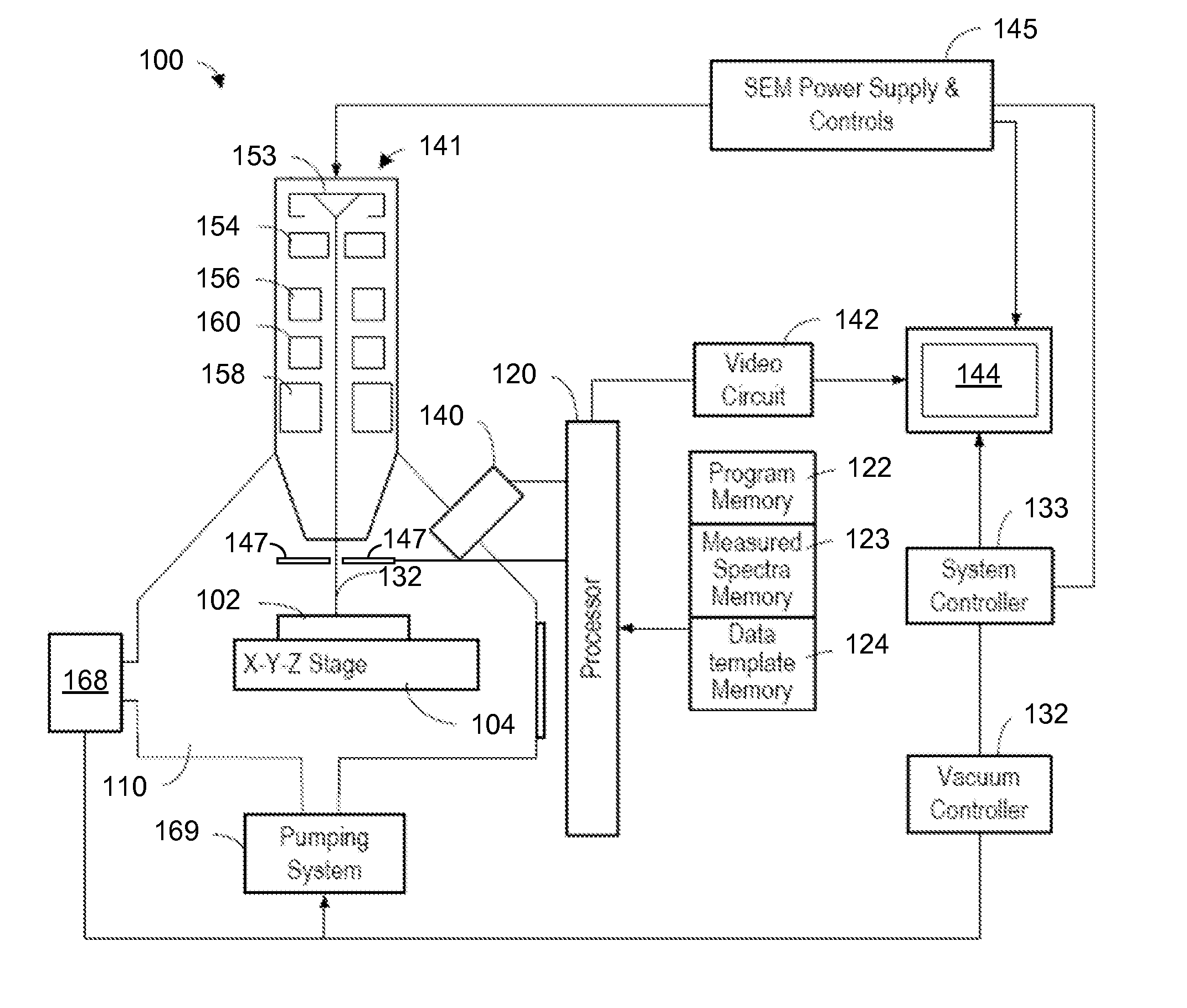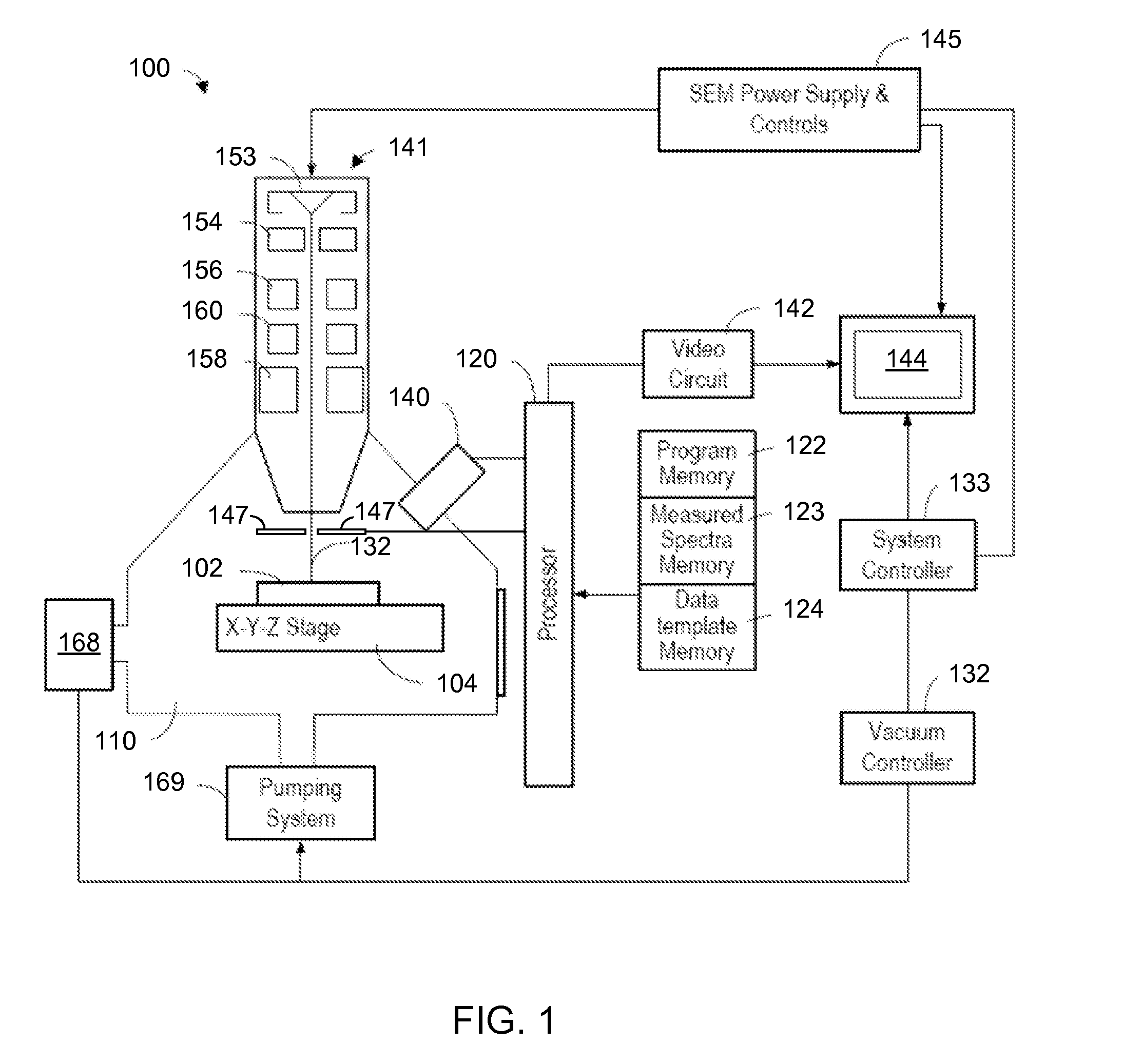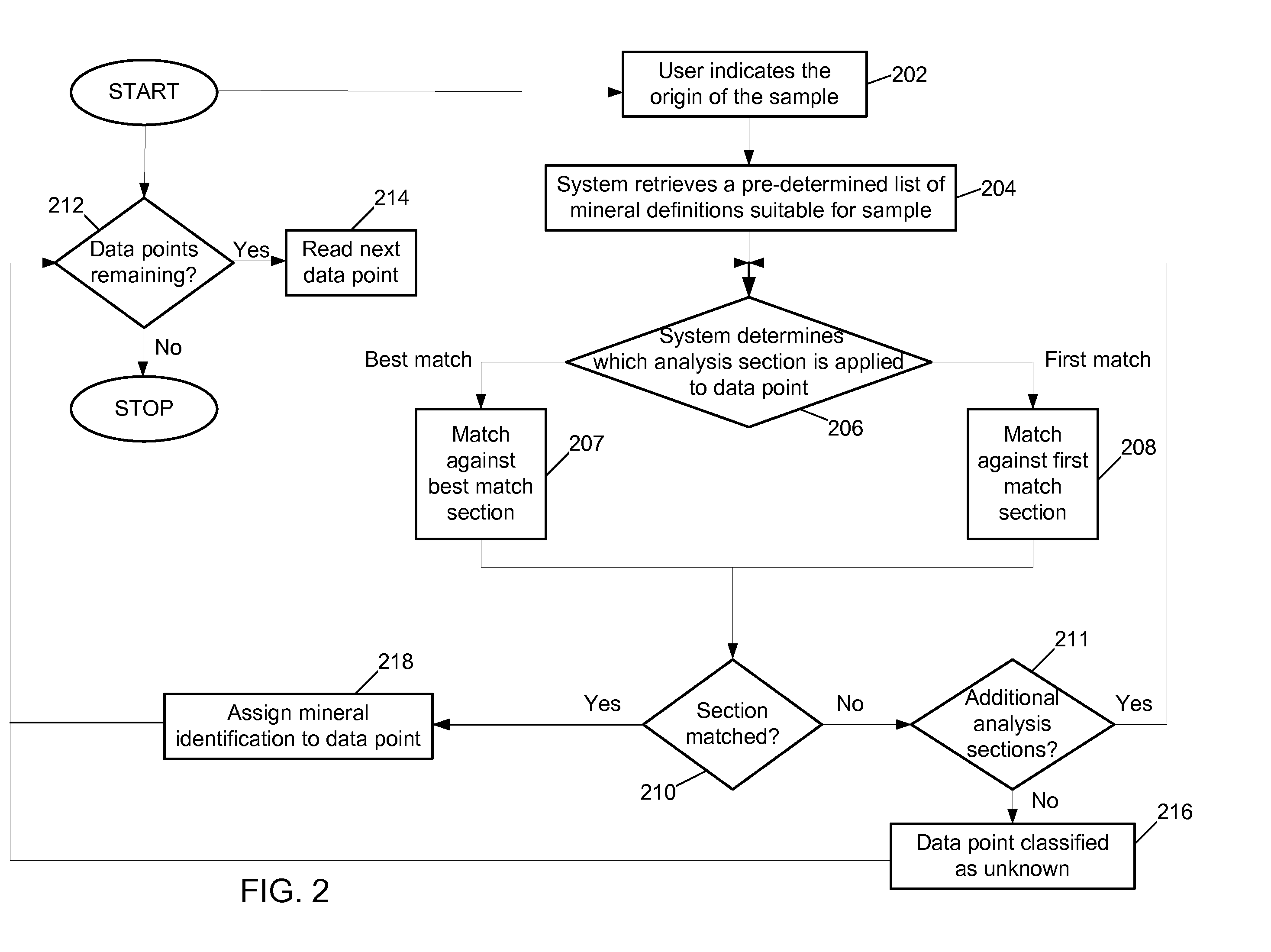Automated Mineral Classification
a mineral classification and automatic technology, applied in the direction of material analysis using wave/particle radiation, instruments, nuclear engineering, etc., can solve the problems of difficult to make an automatic mineral identification system or even a system that can be used, and require more time, so as to achieve efficient classification of mineral samples
- Summary
- Abstract
- Description
- Claims
- Application Information
AI Technical Summary
Benefits of technology
Problems solved by technology
Method used
Image
Examples
Embodiment Construction
[0020]Embodiments of the present invention are directed towards a method for efficiently and easily classifying minerals based on an x-ray spectrum.
[0021]This invention describes a robust method that can be automated to identify a mineral from SEM-EDS data without human intervention. Combining a rules-based approach with a best match approach provides the unexpected benefit of decreasing the analysis time and increasing the robustness of the analysis. In some embodiments, a first match, rules-based approach is used to eliminate data points that are not of interest, such as data points that represent the resin between mineral samples or data points that represent a crack in a sample, which provides unreliable readings. A “data point” corresponds to a position on the sample, either a single dwell point or multiple, grouped dwell points, and can include one or more types of information, such as an x-ray spectrum and back scattered electron information, from that position on the sample....
PUM
 Login to View More
Login to View More Abstract
Description
Claims
Application Information
 Login to View More
Login to View More - R&D
- Intellectual Property
- Life Sciences
- Materials
- Tech Scout
- Unparalleled Data Quality
- Higher Quality Content
- 60% Fewer Hallucinations
Browse by: Latest US Patents, China's latest patents, Technical Efficacy Thesaurus, Application Domain, Technology Topic, Popular Technical Reports.
© 2025 PatSnap. All rights reserved.Legal|Privacy policy|Modern Slavery Act Transparency Statement|Sitemap|About US| Contact US: help@patsnap.com



